Florida Cuban Heritage
A Project By The State Of Florida.
Florida Cuban Heritage
The Florida Cuban Heritage Trail includes descriptions of more than 100 sites important to the history of Florida and Cuba, profiles of famous Cuban Americans, and a guide to Cuban festivals in Florida. This project was published by the Florida Department of State.







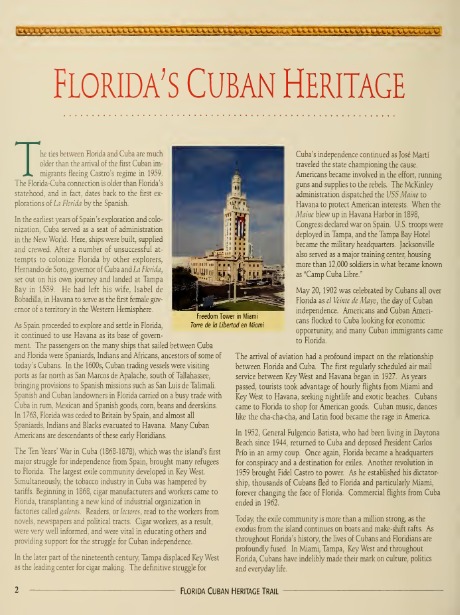































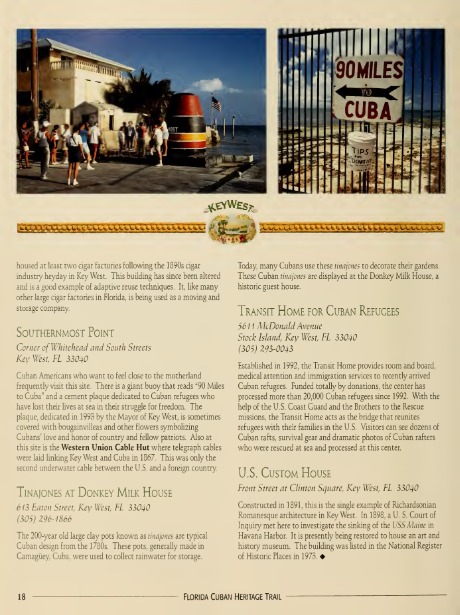



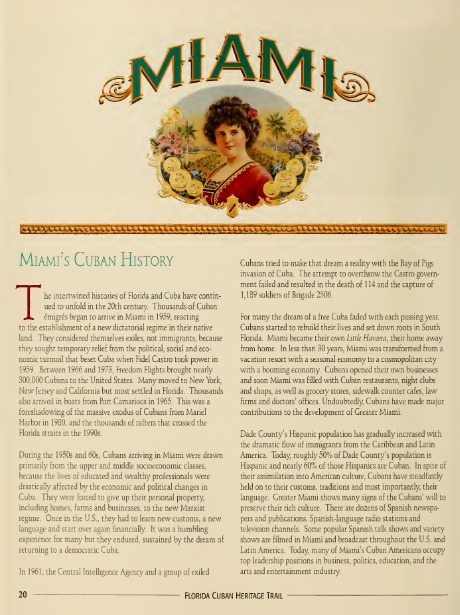



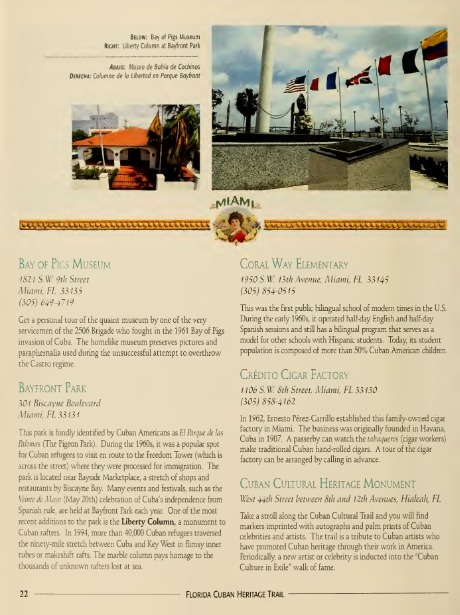





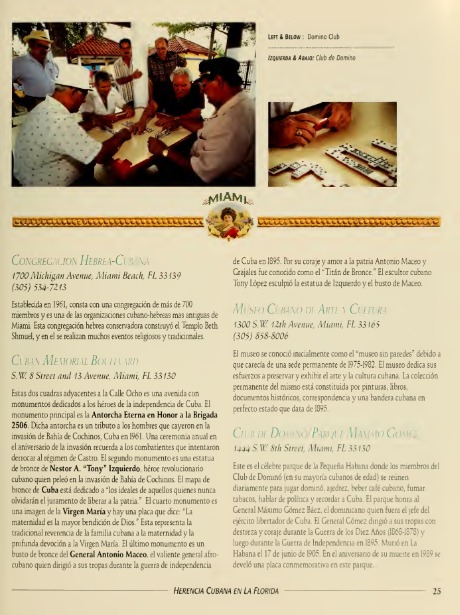







































































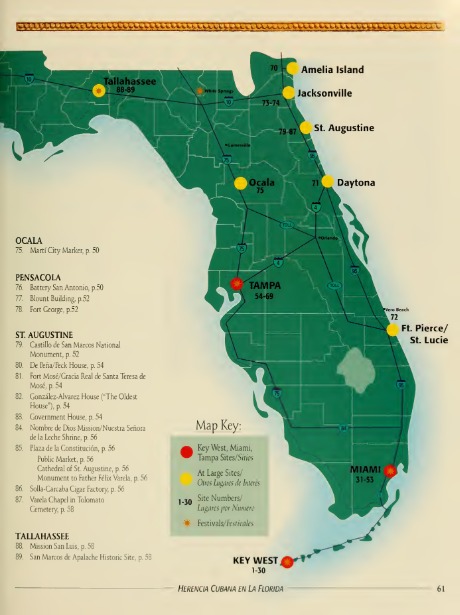










Cuban Landmarks in Florida

San Carlos Institute
Founded in 1871 by Cuban exiles living in Key West, this historic building served as a cultural, educational, and civic center. The San Carlos Institute is considered to be the cradle of Cuba's independence movement, often hosting Cuban freedom fighters and exile figures including Jose Marti. In 1892, Marti united the exile community for the final phase of Cuba's fight for independence. Today, the San Carlos is a museum and cultural center, open to all guests.

90 Miles to Cuba Marker
One of the most popular tourist and local spots in Key West. The 90 miles marker to Cuba reminds us that the island is not that far, a point that is evident in the Cuban culture that still lives to this day in Key West, Florida.

Cayo Hueso y Habana Historeum
The Cayo Hueso y Habana Historeum is a collection of the rich history between Cuba and South Florida. The museum features the stories of the island's fight for independence, and the country’s legacy in Key West. One of South Florida's most famous Cuban restaurants, El Meson de Pepe, lies inside the Historeum. The building is a former cigar factory, where Cuban exiles and other groups would work.

Freedom Tower
Constructed in 1925 as the headquarters of The Miami News, the Freedom Tower became an undeniable symbol of freedom for Cuban refugees starting in the 1960s. The federal government used the facility to process, document and provide medical and dental services for the newcomers. In 1979, the building was listed on the National Register of Historic Places and in 2005 was donated to Miami Dade College. Currently, it serves as MDC's Museum of Art and Design. A Cuban flag still waves atop the building to this day as it's 1920's architecture makes it unique among Downtown Miami's modern skyrises.

Ermita de la Caridad
Construction for the Shrine of Our Lady of Charity, Cuba's patron saint, began in 1967 and was in response to the devotion of thousands of new Cuban refugees.

American Cigar Company Factory
It was on the steps of this historic cigar factory, in 1893, that Jose Marti delivered a number of prominent speeches in support of Cuban independence from Spain. The spot is still preserved with a commemorative plaque.

Jose Marti Park
At only 0.14 acres, this Ybor City park holds a great deal of history. The home of Ruperto and Paulina Pedroso, confidants of Jose Marti and exiled Cubans living in Tampa in the 1800s, once stood here. It was here that Marti would board while in Tampa, and where he sought refuge and was nursed back to health when Spanish agents poisoned him. Today, the park contains a statue of Jose Marti, a plaque with his life story and 6 slabs containing the names of Cuba's original provinces. Each province contains sand from the actual location. The park is part of the Jose Marti Trail in Ybor City.

Marti-Maceo Society
The Marti-Maceo Society is a mutual aid society that was founded by Afro-Cuban patriots in Tampa in 1900. The club originated in 1899 and served as an integrated organization made up of both black and white Cubans.






